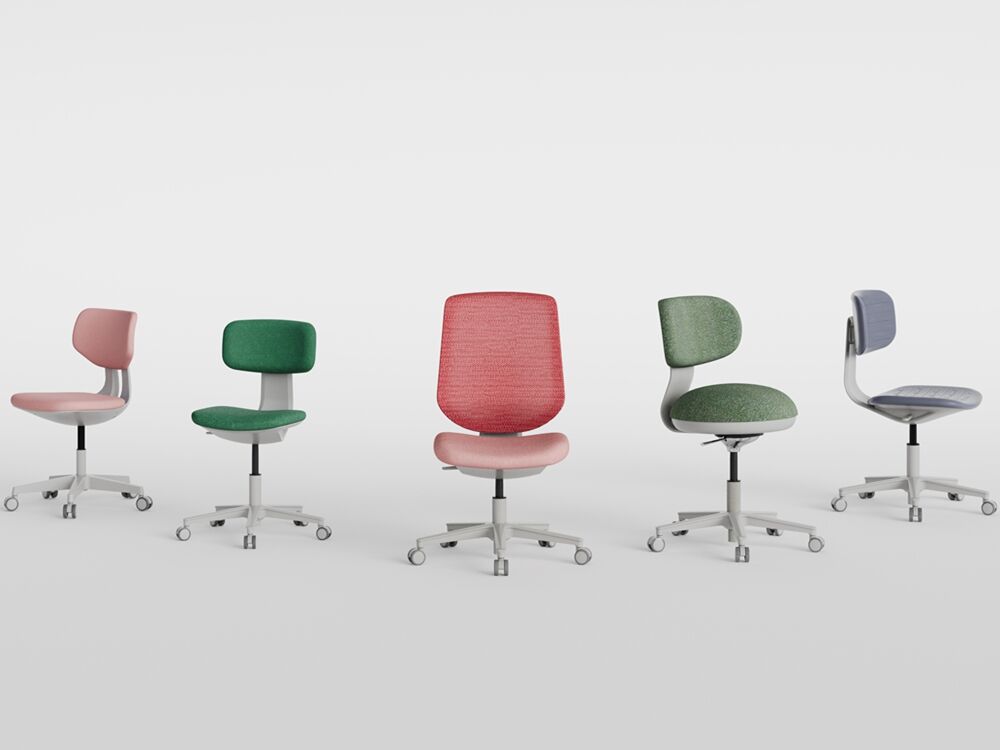
Why Ergonomic Design Matters for Long Hours
Health Risks of Poor Seating
Poor seating can significantly impact your health, leading to conditions like chronic back pain, neck strain, and poor posture. Sitting for prolonged periods in non-ergonomic chairs can increase the risk of cardiovascular diseases by as much as 50%, as indicated by several studies. Moreover, bad seating arrangements are often linked to repetitive strain injuries, which can be both debilitating and severely affect work performance.
Boosting Productivity with Proper Support
Investing in an ergonomic chair can vastly enhance productivity by ensuring essential support and comfort throughout long working hours. Many companies observe a marked 20% increase in employee productivity when providing ergonomic chairs, thanks to features that help reduce fatigue and minimize distractions. With the right chair design enhancing focus, employees can maintain their task engagement without unnecessary discomfort or interruptions.
Long-Term Benefits of Ergonomic Chairs
The long-term health benefits of investing in ergonomic chairs are clear: they can significantly reduce healthcare costs by preventing work-related injuries. Employees who use ergonomic chairs often report higher job satisfaction and reduced turnover rates, fostering a more stable work environment. Additionally, these chairs are designed to improve posture, which positively influences overall health and enhances work performance by minimizing strain injuries and boosting comfort.
Essential Features of Functional Ergonomic Chairs
Adjustable Lumbar Support for Spinal Alignment
Adjustable lumbar support is vital for maintaining proper spinal alignment and preventing back strain. Studies suggest that users who have adjustable lumbar support experience a 40% reduction in lower back discomfort compared to chairs without this feature. By allowing users to customize support according to their comfort levels, ergonomic chairs promote a healthier posture and enhance user satisfaction. For examples, the ErgoSmart chair from The Sleep Company features adjustable lumbar support and ergonomic design, ensuring optimal back comfort during extended working hours.

Seat Depth and Cushioning for All-Day Comfort
Optimal seat depth and cushioning significantly contribute to all-day comfort by providing adequate support to the thighs. Chairs with adjustable seat depth can better cater to various body types, enhancing the overall sitting experience. Proper cushioning materials alleviate pressure points, which is crucial for long working hours. A chair such as the Savya Home Apollo Chair integrates these features, offering users adjustable seat depth and durable cushioning, making it ideal for extended periods of use.

3D Armrests and Headrests for Customization
3D armrests, adjustable in multiple directions, play a crucial role in preventing shoulder strain and enhancing comfort. Additionally, customizable headrests support the neck and reduce the risk of strain during prolonged computer use. Features like these enable users to tailor their ergonomic experience, accommodating various tasks. A perfect example is the Drogo Gaming Chair, which includes 3D armrests and headrests designed for maximum customization and comfort, significantly enhancing the user experience during long hours at the desk.

Materials for Comfort and Durability
Breathable Mesh vs. Premium PU Leather
When choosing an ergonomic chair, the material impacts both comfort and durability. Breathable mesh materials are favored for promoting airflow, keeping users cooler during prolonged sitting sessions. This increased ventilation is particularly beneficial for those who may find their chairs hot and uncomfortable after long hours of use. On the other hand, premium PU leather provides a luxurious feel and is easy to clean. Its sleek appearance makes it an appealing choice for professional settings, adding a touch of elegance to any workspace. Therefore, the choice between breathable mesh and PU leather should balance personal comfort preferences and the desired aesthetic for the office environment.
Sturdy Metal Frames and Nylon Bases
The construction elements of ergonomic chairs are crucial for ensuring stability and longevity. Sturdy metal frames play a pivotal role in maintaining the chair's structural integrity, supporting heavier weights, and catering to prolonged use without compromising safety. Furthermore, nylon bases serve as a balance of durability and flexibility, allowing for seamless movement in dynamic office environments. These materials directly affect the lifespan and performance of the chair, making quality construction an essential factor in the purchasing decision for those seeking the best office chair experience.
High-Density Foam for Pressure Relief
High-density foam is a key component in ergonomic chairs, vital for reducing pressure points by evenly distributing weight across the seating surface. This distribution is crucial in preventing discomfort and promoting health during extended periods of sitting. Ergonomic chairs incorporating high-density foam have been shown to improve blood circulation, which is essential for long-term health benefits. Such features ensure that even during marathon work sessions, the user remains comfortable and supported, making high-density foam an integral feature for anyone in need of a reliable ergonomic chair.
Tilt Mechanisms and Reclining Options
Tilt mechanisms and reclining options are essential features for an ergonomic office chair, like the branch Verve or Corsair TC100, designed to enhance your comfort and posture. These mechanisms allow users to engage their core, promoting a healthier and more dynamic posture throughout the day. For instance, when you adjust the tilt of your chair, it encourages subtle body movements that can prevent stiffness and muscle fatigue. Reclining options further enable shifting positions comfortably, which is vital for combating fatigue during long working hours. This flexibility in adjusting capabilities makes an ergonomic chair suitable for various activities, thus enhancing overall efficiency and productivity in a workspace.
Height Adjustment and Swivel Functionality
Height adjustment and swivel functionality are critical for creating a dynamic work environment that caters to individual needs. Adjusting the height of your office chair ensures that it suits your desk's height, which is crucial for minimizing strain on your body, particularly the neck and shoulders. On the other hand, swivel functionality grants freedom of movement across your workspace, allowing easy access to various desk areas without causing undue strain. These features contribute significantly to the versatility and adaptability of the chair, enabling users to tailor their seating arrangement to their specific ergonomic requirements. By offering tailored adjustability, chairs like the SIHOO M57 Ergonomic Office Chair provide a compelling blend of flexibility, style, and ergonomic support for diverse office settings.
Dynamic Lumbar and Neck Support
Dynamic lumbar and neck support are vital features in any modern ergonomic office chair, designed to provide tailored comfort throughout extended use. These elements adjust according to your movements, offering continuous support and promoting correct posture, which is essential for preventing musculoskeletal issues. The adaptability of lumbar and neck supports helps in effectively managing discomfort by aligning the spine properly, reducing tension. Many innovative chairs now incorporate memory foam systems that mold to the user's specific shape, further enhancing comfort levels. This kind of adaptable support is crucial for long-term health and well-being, reducing back strain and fatigue, and allowing users to maintain focus and productivity throughout their workday.
Choosing the Right Ergonomic Office Chair
Matching Chair Dimensions to Body Type
Selecting a chair that fits your body dimensions is crucial for comfort and to prevent discomfort during extended use. Ergonomic experts recommend testing multiple chairs to discover one that aligns perfectly with your needs. This ensures that the chair supports your posture effectively, reducing the risk of chronic pain associated with prolonged sitting. A well-fitting ergonomic chair can make a significant difference in maintaining a healthy posture, allowing for better productivity and overall well-being.
Testing Weight Capacity and Stability
Understanding the weight capacity of an ergonomic chair is vital for ensuring both safety and usability. Each chair is designed with a specific weight capacity, and using a chair beyond its recommended limits can lead to instability and even accidents. Before purchasing, it's advisable to conduct stability tests to confirm that the chair won't tip over during daily use. Opting for a chair that exceeds your weight requirements not only promotes safety but can also enhance the chair's longevity and performance.
Warranty and Post-Purchase Support
A robust warranty is a key factor when investing in quality ergonomic office chairs. It not only guarantees long-term reliability but also covers potential defects that might arise post-purchase. Evaluating the extent of post-purchase support is essential for addressing any adjustment or maintenance needs that may come up. Companies known for their reliable customer service often receive higher satisfaction ratings, which indicates the importance of support in achieving a hassle-free ownership experience.









